Are you planning a trip to Peru? Depending on your nationality, entering the country might be as simple as showing your passport, while others may need a visa. Learn about the latest Peru Entry Requirements and practical Travel Advice so you can enjoy a safe and unforgettable experience in this amazing destination.
Updated: June 2025
Table of Contents
Document Checklist
Here’s what you’ll need to travel to Peru:
- Passport: It must be valid for at least six months after your arrival date.
- Airline tickets: You'll need to show proof of onward or return travel.
- Visa (if applicable): Most countries don’t need a visa to visit Peru, but there are a few exceptions. Here's a list of countries that do require a visa.
Before traveling, always double-check with your travel provider and the nearest Peruvian embassy or consulate to confirm entry requirements for Peru. Rules can change without notice, so staying informed will help you avoid last-minute issues.
Visa requirements for Peru
Peru is very open to tourists. Travelers from most countries, including the USA, UK, Canada, Australia, and European Union countries, don’t need a visa to enter.
When you arrive in Peru, you will typically get permission to stay for up to 90 days in a 183-day period. The period is calculated from the date of your first entry to Peru.
If you overstay, you will need to pay a fine before leaving the country.
Those who need a tourist visa must follow the traditional procedure for a paper visa. Check here if you need a visa before planning your trip.
Traveling to Peru
Once you arrive in Peru:
At the Airport
Jorge Chavez International Airport is the main airport in Peru. When you arrive, your entry will be registered digitally with the Tarjeta Andina de Migración—it’s no longer a physical form. Just make sure to remember your arrival date since you’ll need it when checking into hotels or booking services.
Arriving by Land
If you’re crossing into Peru by land from a neighboring country, don’t forget to get your passport stamped at the immigration checkpoint. Without it, you won't be able to leave the country. If you didn’t get a stamp, you can apply for one online (the form is also available in English) and will need to provide:
- Your passport details
- Arrival date in the country
If you can’t provide this info, you’ll need to visit the Immigration Office in Lima to request an exit permit or an expulsion order before you can leave Peru.
Vaccine requirements
You don’t need any mandatory vaccines for travelling to Peru, but it’s always a good idea to check what’s recommended, especially if you’re planning to explore remote areas.
If you’re heading to the jungle, diseases like dengue, malaria, and yellow fever are more common. There’s no need to worry, though—just stay informed and take the right precautions to stay safe.
Check out the CDC website for more information about recommended vaccines.
Traveling with children
It's common for families to visit Peru with children. Regardless of nationality, children traveling with both parents only need a valid passport.
There's no need to obtain a Peruvian travel authorization for minors entering the country from abroad, but you’ll need to follow the exit regulations of your home country.
If a child stays in Peru for more than 183 days, a special authorization called “Permiso Notarial de Viaje” will be needed to leave the country.
For minors who are dual nationals or have parents of different nationalities, the requirements can vary depending on the country. To ensure everything is in order, check with the Peruvian embassy or verify the specific travel requirements for children from your country.
Safety and Security
Peru is generally safe for tourists, welcoming thousands of travelers each year to explore incredible sites like Machu Picchu. Still, as with any trip, it’s important to stay mindful of a few safety tips. Here’s what you should keep in mind to enjoy a safe visit to Peru:
- Political protests, demonstrations, and strikes are common in Peru. Past demonstrations have turned violent and disrupted public transport services, including trains to and from Machu Picchu. Avoid protests, monitor local media for updates, and follow the advice of local authorities.
- Crime issues have been increasing in certain big cities like Lima. Avoid going out alone, especially at night. Be alert in public places and when withdrawing cash from ATMs.
- Be aware of petty crime: Pickpocketing and other forms of petty crime can occur in common public areas or on public transportation. Pay attention to your belongings and avoid carrying large amounts of cash or expensive items. Street theft of mobile phones has increased. Avoid using your phone at the roadside, as motorbike riders may snatch it.
- Peru is susceptible to many natural disasters, such as floods and earthquakes. Monitor local media, and keep an eye on the local weather to keep yourself updated about potential dangers. During the rainy season, traveling to steep or slippery areas can be dangerous. *We always recommend purchasing travel insurance to travel.
- Use only reputable transport and taxis: Travelers using unlicensed taxis have been victims of robbery, assault and rape. Don't hail taxis from the street. Use licensed telephone or app-based taxi services. Ask your hotel to book taxis for you. Criminals target cars stopped at traffic lights. Keep your doors and windows locked, even when moving. Robberies and assaults occur on intercity buses. Avoid placing personal belongings on overhead racks or under your seats.
- Take precautions in remote areas: If you're traveling to remote areas or hiking in the mountains, be sure to research the area and take appropriate safety precautions, such as hiring a guide or traveling with a reputable tour company.
Note: Crime doesn’t apply equally across all of Peru; some cities, like Cusco, are safer than others. If you take basic precautions, you’ll be secure in most places. Crimes against tourists are very rare, but theft is more common.
Custom rules
Peru has strict regulations regarding items you can bring into or take out of the country. Be sure to declare anything that might be restricted or subject to taxes or duties.
You’re allowed to bring one laptop and up to two mobile phones into Peru tax-free.
When you leave Peru, you could face legal action if you are found carrying:
- Items made from the skins of wild animals
- Crafts created using preserved insects, sea creatures (like starfish or seahorses), or spiders
- Souvenirs or jewelry made from condor feathers, turtle shells, bones, teeth, or other animal parts
The sale of products made from wild animal parts is illegal in Peru. Additionally, it is against the law to take archaeological artifacts out of Peru without proper authorization.
Travel Restrictions
International flights to Peru
There are no longer any COVID-19-related restrictions for entering Peru. However, it’s important to check with your airline for any specific requirements before boarding your flight.
Domestic flights
There are no restrictions for domestic air travel within Peru.
Bus travel
There are no restrictions for traveling by bus in Peru. Contact the bus company directly to confirm if they have any specific policies or requirements.
Hotels and Restaurants
There are no travel restrictions for staying in hotels or dining at restaurants. Contact the hotels or restaurants to verify if there are any special requirements.
*Always double-check with transportation providers and accommodation services for the latest updates or requirements.
Machu Picchu
- Machu Picchu Site: There are no restrictions for tourists visiting Machu Picchu, but there are rules about what you can bring and how to behave while inside the site. Be sure to review our Machu Picchu Tickets Guide for all the details.
- Trains to Machu Picchu: No restrictions
- Inca Trail: There are no restrictions for the Inca Trail, but remember, it closes every February for maintenance.
›› Read More: Best Time to Visit Peru
Peru Travel Advice
Transport and best way to travel around
Road Trip
If you have an international driving permit, a road trip is a great way to explore. Just be ready with a flexible budget, enough time, and the patience to deal with chaotic traffic and some rough roads. Rentals start at about $16 for a basic car and go up to $60 for an SUV.
The Pan-American Highway is the main route connecting northern and southern Peru. If you’re planning to visit the jungle or the Andes, renting a four-wheel-drive vehicle can make the journey much easier.
Trains
Trains in Peru only cover a few routes, and one of the most famous is the journey to Machu Picchu. You can catch a train from Cusco or Ollantaytambo in the Sacred Valley and enjoy stunning views along the way. Both Inca Rail and Peru Rail offer tickets to this UNESCO World Heritage Site.
Read More: Trains to Machu Picchu
Taxis
Taxis might be pricier than public transport, but they’re a good option for getting around quickly and staying safe at night. Always make sure to use licensed drivers and agree on the fare before starting your trip. In bigger cities, you can also use apps like InDrive or Uber to book a ride. You can also ask your hotel to book a taxi for you.
Altitude Sickness
Altitude sickness is very common in Peru, especially when visiting high-altitude destinations like Cusco or Puno. The sudden change in elevation can cause symptoms such as headaches, dizziness, or fatigue. In very high places, like Rainbow Mountain, there have even been cases of fainting, and remote areas may lack immediate medical assistance.
With proper preparation, you shouldn't face any issues. Here are some recommendations:
- Arrive in high-altitude cities at least two days before starting any hikes. This gives your body time to adjust to the elevation.
- If you have a heart condition or other health concerns, consult your doctor before attempting activities at high altitudes.
- Avoid heavy meals and make sure to stay well-hydrated.
- Check if your insurance covers emergency evacuation and related medical costs.
Places above 2500 meters:
- Cusco: 3300 m (11,155 ft)
- Rainbow Mountain: 5040 m (17,717 ft)
- Humantay Lake: 4200 m (13,780 ft)
- Puno/Lake Titicaca: 3800 m (12,467 ft
- Colca Canyon: 3780 m (12,400 ft)
- Huaraz: 3052 m (10,013 ft)
For more tips, check out our guide: How to Overcome Altitude Sickness in Cusco.
Ayahuasca Tourism
Ayahuasca ceremonies and spiritual cleansings, often led by shamans or facilitators, involve consuming hallucinogenic substances. While these experiences can be meaningful for many, it’s important to note that the brew is not regulated, and its effects on existing medical conditions are not fully understood. For safety, these ceremonies should only be conducted by trained professionals.
In the hands of unqualified individuals, there have been cases of complications, including injury, assault, and, in some instances, death. Many ceremonies take place in remote areas without access to medical care or emergency support, so it’s crucial to approach these experiences with caution and research the credibility of the facilitators.
Thoroughly research Ayahuasca tour operators before you book.
Official Resources for Traveling to Peru
For the most up-to-date details, check the Peru entry requirements for your country. Here are the official links with the latest information:
➡️Read the latest updates and Peru Travel News |
Latest FAQs About Traveling to Peru
Is traveling to Peru safe right now?
Peru is safe to visit, and all major tours, including Machu Picchu, are running as usual. However, due to the rainy season, some areas have been affected by flooding and landslides. Routes like the Salkantay Trek haven't been completely restored. If you're planning to visit these destinations, be sure to check for updates and consider alternative routes during this period.
Is Machu Picchu and the Inca Trail open?
Yes, Machu Picchu is currently open to visitors. The Inca Trail is also open and available for hikers. If you're planning to visit, make sure to book in advance to secure your spot and avoid any last-minute issues.
Is the airport in Cusco and others operating?
Yes, the airport in Cusco is open, and flights are operating normally.
Are the Machu Picchu Trains running?
Yes, both Inca Rail and Peru Rail are fully operational, with multiple daily departures to Machu Picchu.
Is Peru, Cusco and Machu Picchu safe for travelers?
Yes, it’s completely safe to visit. While some countries have issued travel warnings for Peru, Cusco and Machu Picchu remain some of the safest places for tourists.
Can I travel to Peru right now from USA?
Yes, as of 2025, U.S. citizens can travel to Peru without major restrictions. However, it’s always a good idea to double-check the latest entry requirements before your trip. For the most up-to-date information, visit the U.S. Embassy in Peru’s official travel page.
Do US citizens need a visa for Peru?
U.S. citizens don't need a visa to visit Peru for tourism stays of up to 183 days. Just make sure your passport is valid for at least six months beyond your arrival date.
Countries that don’t require a visa to enter Peru
|
|
|
Countries that require a visa to enter Peru
|
How to Stay Safe While Traveling in Peru
Taking basic precautions is the best way to stay safe while traveling in Peru. First, make sure you are up-to-date on all your vaccinations. Second, wash your hands often. Third, avoid touching your face. Fourth, clean and disinfect surfaces that you come into contact with. Fifth, stay in well-ventilated areas as much as possible. Finally, wear a face mask if you cannot avoid close contact with others.
If you get sick while traveling in Peru, it is essential to seek medical attention immediately. Many hospitals and clinics in Peru can provide you with the necessary care.
Written by



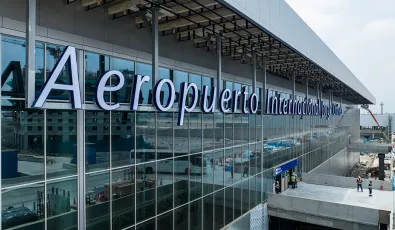
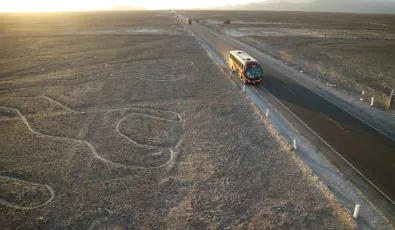
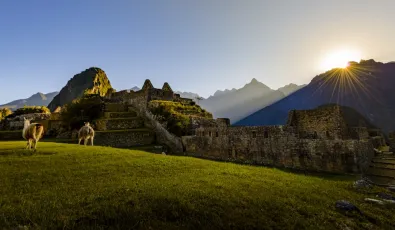
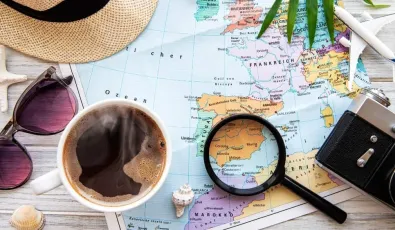
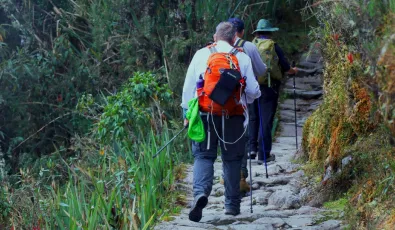
Cib hossy
Bravo, this excellent idea is necessary just by the way
Hi trexperienceperu.com…
Hi trexperienceperu.com admin, You always provide clear explanations and step-by-step instructions.
Cool, I've been looking for this one for a long time
Thanks, I've been looking for this for a long time
Hi trexperienceperu.com…
Hi trexperienceperu.com admin, You always provide clear explanations and step-by-step instructions.
Add new comment